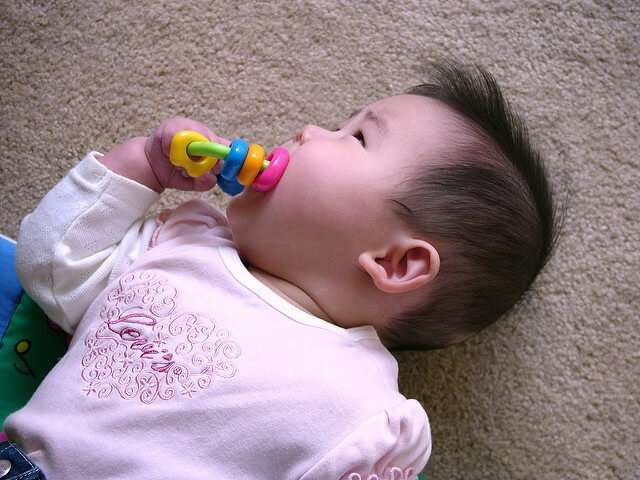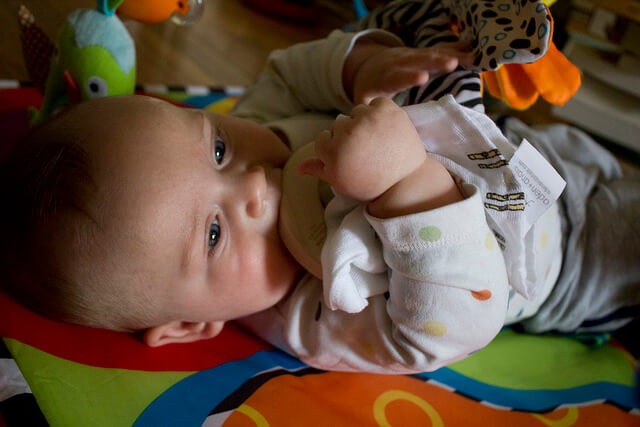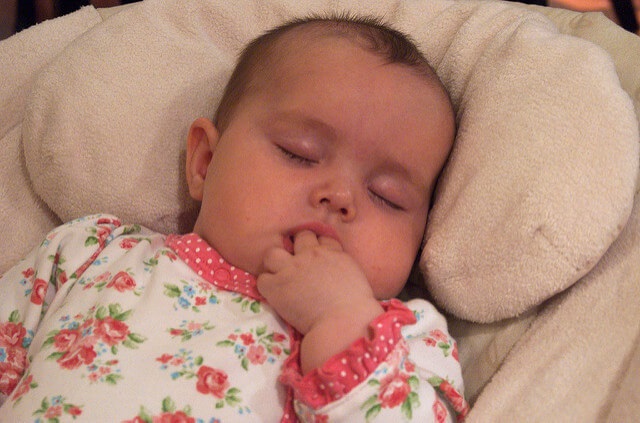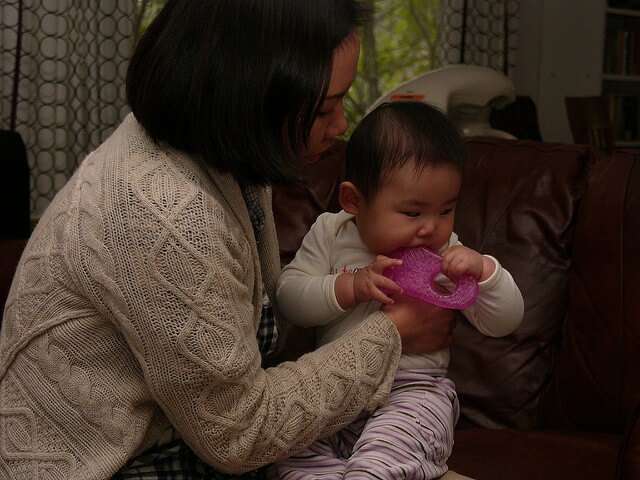Tips To Ease Teething Pain in Your Baby or Toddler

There are a handful of reasons babies cry. Outside of the three most common - tired, hungry, and in need of a diaper change –teething is another source of tears. But no matter what the cause, no parent likes to see her little one upset. The American Academy of Pediatrics (AAP) offers some tips that don't involve medication on how to ease teething pain in your baby or toddler.
Teething Toys
Perhaps the most common remedy is a cold teething toy. Items that fall under this category include teething rings not filled with liquid, a wet face cloth that's been chilled in the freezer (anywhere from 15-30 minutes), or a frozen banana, if your little one is onto solid foods.

Photosource: Flickr/Quinn Dombrowski
Massage
This technique is intended for babies who are still breastfeeding. If your daughter is more interested in chewing on you as opposed to a teether toy, soak your finger in cool water and gently massage her gums before feeding her.
Fingers
Another standby is to let her chew on your fingers. Of course, take heed that no teeth have popped through yet or her chew session might not be that enjoyable for you. While your finger is in her mouth, you can also rub her gums with it. Remember to clean any fingers intended for chewing first!

Photosource: Flickr/David Owen
Unsweetened Teething Crackers
The AAP also recommends unsweetened teething crackers, usually found in the baby food aisle of your local grocery store. Not only will your little one enjoy snacking on these, but they come individually wrapped and can be conveniently carried in your diaper bag.
Age-Specific Solutions
For babies older than six to nine months, the AAP recommends trying a sippy cup with the slow-flow design. Fill it with cool water for her to drink.
Teething Side Effects
In addition to tears and general unhappiness, teething does have some side effects on little ones according to the AAP. The most common one is a slightly elevated fever. If the fever reaches higher than 100.4 F, consult your child's pediatrician. Also, if she's vomiting or has diarrhea, a doctor trip is in order as those could be signs of some other medical issue.

A mom holds her baby
Photosource: Flickr/mliu92
Avoid Teething Tablets and Gels
The U.S. Food and Drug Administration recently issued a warning that homeopathic teething tablets and gels can pose a threat to infants and young children. The FDA advises disposing of any tablets or gels you may have. If you have given them to your child, seek immediate medical help if she displays any of the following symptoms:
- Difficulty breathing
- Lethargy
- Muscle weakness
- Seizures
- Excessive sleepiness
- Constipation
- Difficulty urinating
- Agitation
- Flushed skin
Amber Teething Necklaces
Beware of using an amber teething necklace to alleviate teething pain. They've become more common as an alternative solution, but according to the AAP, they don't work. And more alarming is that they can result in strangulation or choking. The necklaces can become twisted and cut off a child's airway, or the necklaces can break and a child can choke on a swallowed bead.
Teething is never any fun for you or your baby. But using the above-mentioned tips on how to ease teething pain can make the process easier on both of you.
Featured Image Photo Source: Flickr/mliu92

